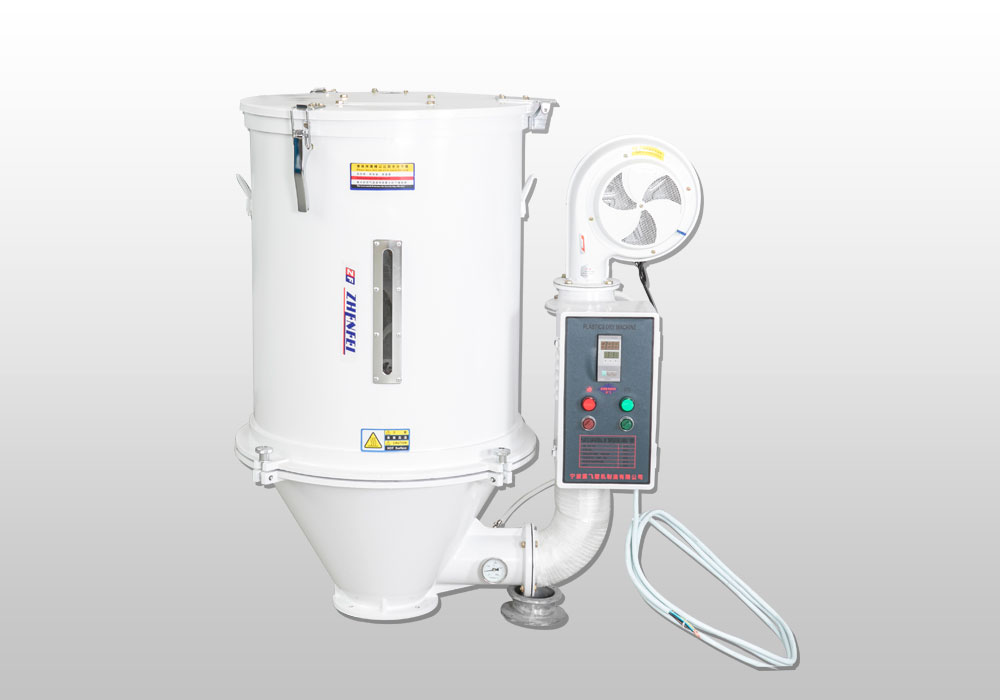A hopper plastic dryer is a machine used in the plastic manufacturing industry to remove moisture from plastic pellets, resins, or granules. Moisture in the raw material can cause defects in the finished plastic products, so it is essential to dry the material before processing.
The hopper plastic dryer works by heating the plastic material to a specific temperature in a drying chamber, where hot air circulates around it. The hot air is generated by electric or gas-fired heaters and is blown into the drying chamber by a fan. The temperature in the chamber can be set and controlled to optimize the drying process for the specific type of material being dried.The heated air removes moisture from the plastic material as it circulates through the drying chamber. The moisture is then exhausted through an exhaust port. Once the drying process is complete, the material is cooled to prevent it from melting or sticking together.
Hopper Plastic Dryer Factory come in a variety of sizes and configurations to accommodate different materials and production volumes. They are an efficient and effective way to remove moisture from plastic materials, ensuring that the finished products are of high quality and free from defects.A hopper plastic dryer is a machine used for drying plastic pellets, resins, or granules. The drying process is necessary because moisture in the raw material can cause defects in the finished plastic products. Here is how the hopper plastic dryer works:
Loading: The plastic pellets, resins, or granules are loaded into the hopper plastic dryer through a hopper or other loading mechanism.
Drying chamber: The material is then transported into the drying chamber where hot air circulates around it.
Heating: The hot air is heated by electric or gas-fired heaters and is blown into the drying chamber by a fan. The temperature in the chamber can be set and controlled to optimize the drying process for the specific type of material being dried.
Drying: The heated air removes moisture from the plastic material as it circulates through the drying chamber. The moisture is then exhausted through an exhaust port.
Cooling: Once the drying process is complete, the material is cooled to prevent it from melting or sticking together. Some hopper plastic dryers have a built-in cooling mechanism, or the material can be cooled with ambient air.
Unloading: The dried plastic material is then unloaded from the hopper plastic dryer, ready for further processing or packaging.

(a) Uniform hot air distribution: high thermal efficiency, greatly reducing drying time
(b) Accurate temperature control: use high-precision quantity temperature regulator to eliminate temperature error
(c) Save time and save manpower: separate design of barrel and base, convenient feeding operation, simple and quick refueling
(d) Increasing the injection rate: direct heat blanking, shortening the material dissolution time and increasing the injection rate
(e) Scientific and beautiful appearance: beautiful and sturdy shape, easy to install, and a variety of safety devices to ensure safe production.
